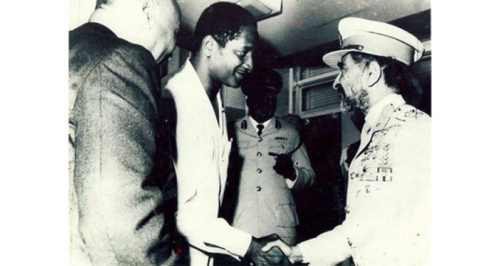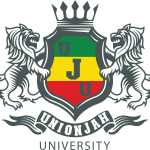Title : Emperor Haile Selassie I in Guyana
By UnionJah Observer | April 29, 2025
Haile Selassie I in Guyana: The Emperor and the Land of Many Waters
“Africa stretches her hand to her children, wherever they are found.” — H.I.M.
Date of Visit: April 1966 (Part of His Caribbean Tour)

- Location: Georgetown, the capital city
- Welcomed by: Prime Minister Forbes Burnham
- Purpose: Strengthening diplomatic relations and affirming Afro-Caribbean identity
Historical Context
In 1966, Guyana was still known as British Guiana, just weeks away from full independence (achieved on May 26, 1966). Haile Selassie’s visit symbolized:
- Support for decolonization
- Recognition of the African diaspora’s dignity
- A unifying link between Africa and the Caribbean
Highlights of the Visit
1. Official State Welcome
- Greeted with a military parade and ceremonial honors in Georgetown.
- Thousands lined the streets to catch a glimpse of the Conquering Lion of Judah.
2. Meeting with Prime Minister Forbes Burnham
- Topics included:
- Education and cultural exchanges
- Agricultural development
- African unity and Caribbean independence
- Burnham praised Haile Selassie as a symbol of strength and wisdom for post-colonial states.
3. Address to the People
- The Emperor urged the Guyanese people to honor their roots, uphold justice, and embrace national pride.
- His words resonated deeply, particularly among Afro-Guyanese communities.
Cultural and Spiritual Impact
- His presence invigorated Pan-African consciousness and inspired Rastafari communities in Guyana, who viewed him as divine or messianic.
- For many, this was a moment of spiritual reconnection to Africa’s royal legacy.
- The visit influenced emerging social movements that sought to empower Guyana’s African-descended population.
“The Emperor’s feet touched our soil before our independence. It was a divine sign.”
— Guyanese Elder & Rastafari Historian
Legacy in Guyana
- The visit is often referenced in Pan-African circles as a sacred diplomatic mission.
- Inspired:
- The growth of Afro-conscious education.
- Strengthened Black pride and cultural awareness.
- Support for the Guyanese independence process.
- Today, some Rastafari communities in Guyana still commemorate his visit annually.
Photos or Visual Records
Visuals from this visit may be found through:
- National Archives of Guyana
- Chronicle Newspapers (Georgetown)
- Caribbean Broadcasting Union archives
